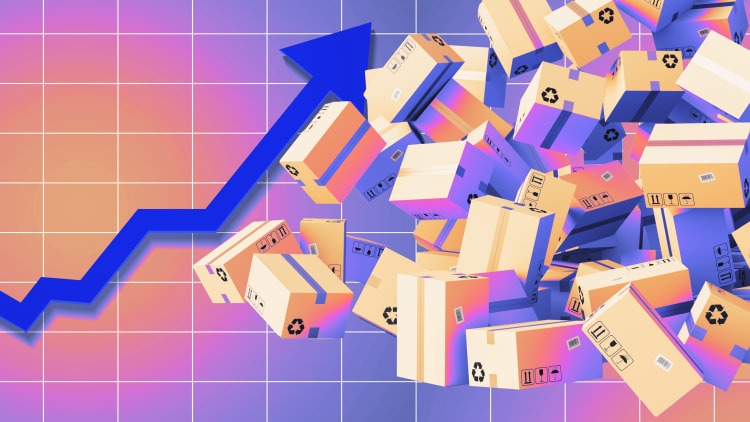- | 8:00 am
E-commerce sales are soaring. So is corrugated box usage
Consumers bought nearly $300 billion worth of goods in three months, and much of it was in a box at some point from manufacture to sale.

The latest quarterly e-commerce sales report from the U.S. Department of Commerce shows that online sales are outperforming offline when it comes to the pace of growth.
American consumers bought $291.6 billion worth of goods through e-commerce retailers in the second quarter of 2024, up 1.3% from the first three months of the year, and up 6.7% from the same period in 2023. That 6.7% year-on-year growth is far higher than the total retail sales growth of 2.1%.
The share prices of companies like Amazon (up 20% this year) and lawsuits between online retailers Shein and Temu are testament to that uptick, as is the ballooning cost for air cargo out of China.
But another indication of, and result from, e-commerce’s continued success? A long-awaited rebound of corrugated box shipments across the U.S., according to the Fibre Box Association (FBA), a trade association that has represented the industry since 1940.
Shipments of corrugated boxes increased 3.2% from the first to second quarter of the year, FBA data showed, with more than 96 billion square feet of cardboard delivered. The corrugated box market is seasonal, points out Rachel Kenyon, senior vice president at the FBA—and grows over the year into fall—but the wider economy, buoyed by S&P 500 performance supported by Big Tech, plus e-commerce, has played its role in bolstering box sales.
“A lot of it has to do with how the economy is trending,” Kenyon says. “It’s not all about e-commerce, but e-commerce definitely helped.”
Kenyon points out that it’s not possible to draw a one-to-one connection between e-commerce sales and corrugated box shipment growth because e-commerce is generally substitutive, rather than additive: You buy your dining room table from an online retailer, rather than a store, but it comes in a box to your home whichever way it’s purchased.
Such a link was possible to draw at the start of the pandemic era, as bricks-and-mortar stores were shut but people still needed items. “During COVID, because nobody could go anywhere, you saw more boxes that were coming into your home,” Kenyon explains. “If you look at the trend line of volume shipments, you’ll see there was an uptick.”
That link has since become fragmented as more of us return to physical stores. But online or offline, the retail sector is keeping cardboard boxes in business. Whether you buy an item from an Amazon depot or a Home Depot store, it likely got there in a cardboard box.






































